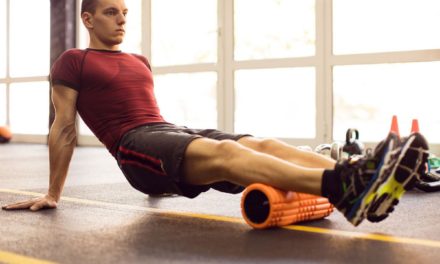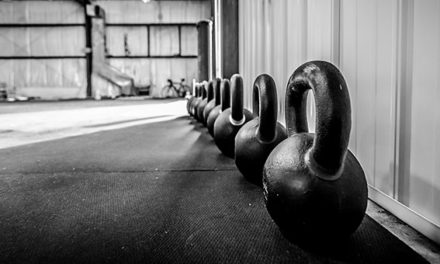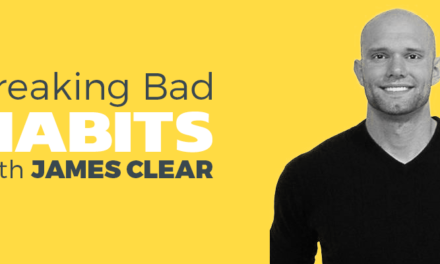People decide to incorporate balance training for many reasons. Athletes do so to help them execute physically demanding maneuvers and gain a competitive edge. Performers do so to help them execute difficult techniques with grace and flow. Seniors do so to help them feel more stable and comfortable in crowds and reduce their risk of falling. And many incorporate balance training to develop strength and endurance in the many small vital stabilizer muscles with the aim of prevent a long-term injury. Whatever your reason though, if you have decided to incorporate balance training into your program it is important to understand the mechanisms behind how balance actually works and how to properly and safely progress your training program.
How Balance Works
When we think of balance we usually think of our ability to hold a pose, normally on one leg or on an unstable surface, for an extended period of time. But that is just the end result of a number of very important processes that come together to give us the ability to stabilize ourselves. Our ability to balance really depends on our brain’s ability to process information from three key systems.
The Three Sensing Systems
The first is our vestibular system, which is a complex of tubes and canals situated in our inner ear that detect rotation, changes of speed, changes of height, and changes of general orientation. The second is our visual system, which comprises our eyes, their supporting structures, and their nerves. Our visual system is responsible for processing light and building a representation of our surrounding environment. The third is our proprioceptive system. Our proprioceptive system is a term that describes the group of sensors imbedded in our skin, muscles, tendons, ligaments, cartilage, and joints that detect changes in the length, tension, and pressure of those structures.
Our Information Processing Brain
Information gathered from these three systems is sent up a collection of nerves to the brain where the information is organized, processed, and analyzed. (By the motor cortex, the basal ganglia, and the cerebellum.) Once the data has been analyzed our brain will then send signals back out to our muscular system. These signals will then tell each specific muscle involved in the current pose, movement, or exercise to contract, relax, or hold its position. Our muscles receiving and following these orders are the part of the whole balance equation that we really see and feel and equate with “balancing.”
The Five Variables You Can Change To Make A Balance Exercise Harder
The key to improving our balance is to continue to challenge it. To do so we need to put our body in positions that are difficult for our current level of balance, but that are not so far beyond our current ability that we simply cannot achieve them yet. To continue to challenge our body’s balance abilities, when executing a pose, movement, or exercise there are five primary ways we can manipulate the activity To make it more challenging.
- Movement
The first thing we can do to make a pose more challenging is to add movement to it. Take a general squat for instance. When we are simply standing still at the top of the squat, not much balance is require and there isn’t much of a challenge to our system. However, the moment we begin to descend the difficulty increases. We now must continuously shift our weight and stabilize our knees to ensure we don’t fall over while going through the movement.
Taking the example of movement a step further, if we are simply standing up but then add in a lunge, the added demands to our balance are increased even further. When we step forward into a lunge we are forced to balance on one leg for a moment, stabilize our landing, and continue to maintain our balance even as we generate enough force from our front leg to propel our self back up to our starting position.
- Unstable Surface
The second thing we can change to make an exercise more difficult is to change the surface we perform the exercise on. Lets examine the squat again. Let’s say we now feel comfortable squatting but now want to make the exercise even more challenging. Instead of performing the squat while standing directly on the floor, we could stand on an airex pad, a half foam roller, or even a balance board. Each one of these surfaces adds another degree of difficulty and requires more balance than the last.
- Single Leg
The third variable we can change to make an exercise more challenging is to switch from using two legs at a time to using just one. This time let’s just look at standing in place. By simply picking up one foot and standing on the opposite leg alone we have significantly increased the balance challenge to the leg we are standing on.
- Weight
The fourth variable we can manipulate is to add weight to the exercise. Adding weight to an exercise adds even more stimuli, and thus demand, to our muscular and nervous systems. And this added stimulus then forces our nervous system to fire even more intensely.
- Eyesight
The final variable we can manipulate to change the difficulty of a balance exercise is to manipulate our eyesight. The first way we can manipulate our eyesight to make an exercise more challenging is to look around while performing the exercise. This simple task takes away our ability to center ourselves and greatly disrupts the benefits that come with doing so.
An even more intense way to make a balance exercise more difficult is to close our eyes entirely. Without one of the three systems responsible for sensing our position in space, the difficulty of any balance exercise is increased significantly. To get a feel for how much your eyesight influences your balance, try just closing your eyes while standing in place. You’ll be surprised how unstable you may feel. And one extra benefit of closing our eyes during a balance exercise is that doing so puts a proportionally very large demand on our muscular, tendonous, ligamentous, and cartilage sensory system. Thus closing our eyes during an exercise is a great way to speed up the development of our proprioceptive sensory system.
Putting It All Together
To make a balance exercise even more difficult we can combine elements from all five variables. Perhaps we try a traditional squat (movement) on a balance board (unstable surface) while holding twenty-pound dumbbells in each hand (weight.) Or perhaps we try a single leg (single leg) squat (movement). Or perhaps we try to balance with our eyes closed (eyesight) on an airex pad (unstable surface.) Or maybe we go all the way and try a single leg toe touch (single leg and movement) while holding a 20 pound dumbbell (weight) on an airex pad (unstable surface) with our eyes closed (eyesight.) Talk about a challenge!
As with any other type of training, if you have decided to begin to incorporate balance training into your program remember take your time, progress slowly, and always be safe.
To Our Health
Zach





